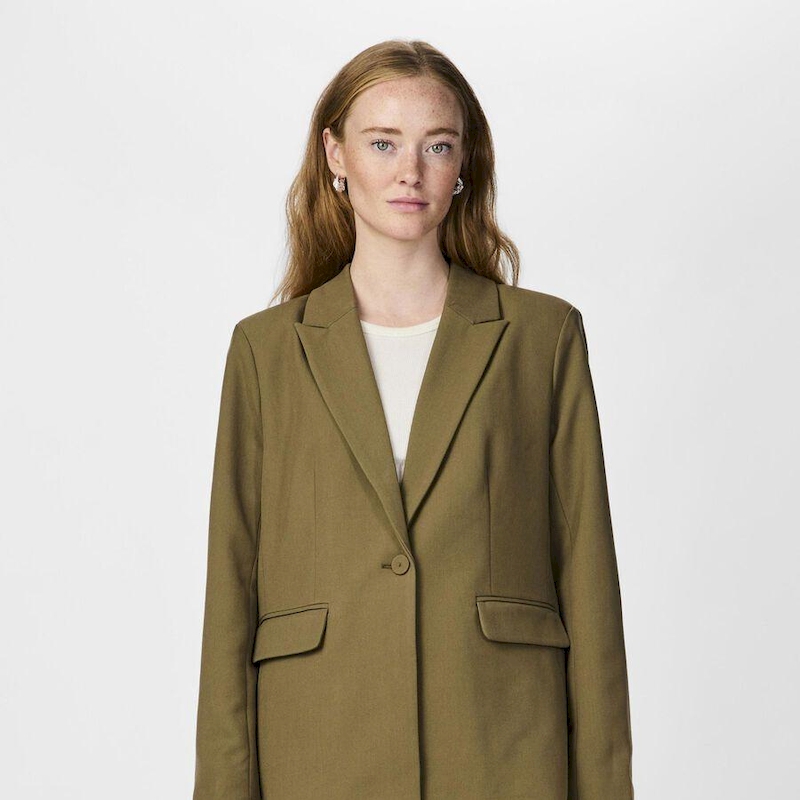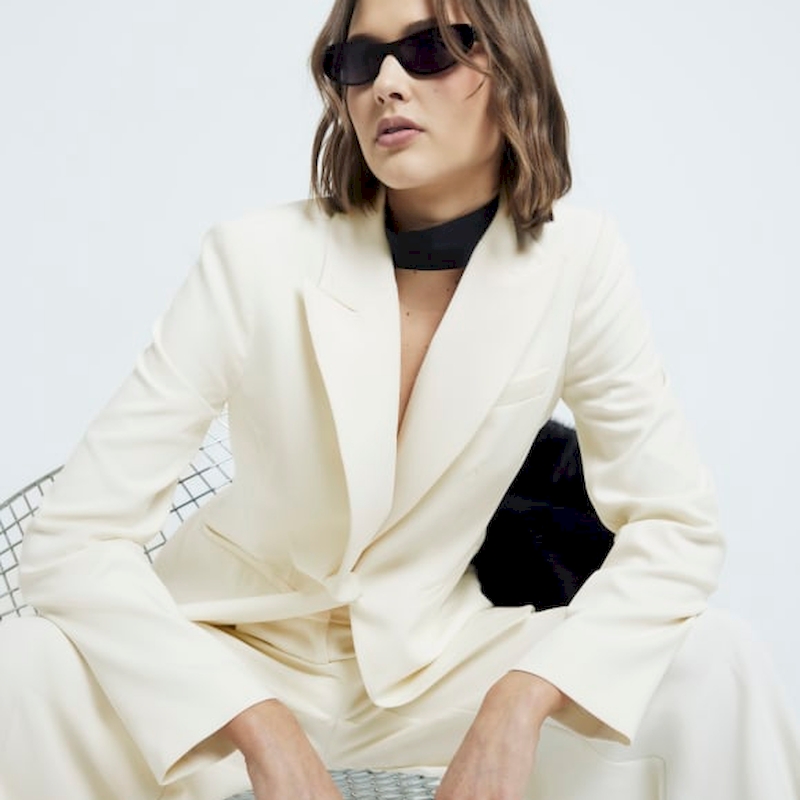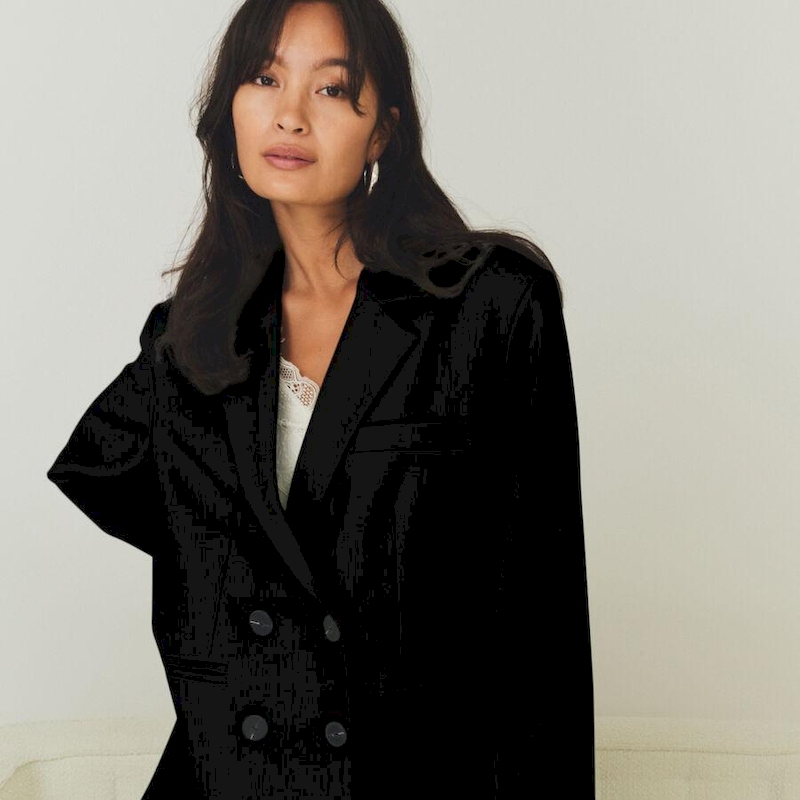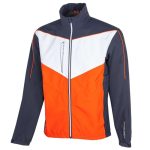When it comes to versatile clothing options, few items can rival a blazer. But what exactly is a blazer? A blazer is a type of jacket, typically tailored and designed to fit well, that can transform an outfit from casual to formal with just a simple addition. Originating in the early 19th century, blazers have since evolved into a fundamental piece of clothing that shapes modern fashion for men and women alike. Depending on how one styles it, a blazer can be dressed up or down, making it suitable for various occasions—from business meetings to social gatherings. This article will provide an in-depth exploration of what a blazer is, its rich history, various styles, the appropriate fabrics, and even some essential tips on how to wear one to achieve the perfect look.
By understanding the nuances of this timeless garment, you can elevate your wardrobe and make more informed fashion choices.
A Brief History of the Blazer
To fully appreciate what a blazer is today, it is important to take a closer look at its origins. The history of the blazer dates back to the early 19th century, primarily associated with the British navy. Here’s a more detailed timeline of its evolution:
Early Origins
- Naval Roots: The term “blazer” is believed to have originated from the jackets worn by members of the 1860s British Navy. These jackets were made from bold-colored fabric, often red, and were typically worn by officers.
- The Cambridge University Connection: The style gained popularity among students at Cambridge University during the 19th century. Specifically, the “Cambridge Blues” were sported by the rowing team, which wore bright blue blazers, marking a significant departure from military uniforms.
- Emergence in Sports: By the late 19th century, blazers began to be associated with various sportsmen, especially in disciplines like rowing and cricket, due to their combination of elegance and functionality.
Transition into Fashion
- Early 20th Century: In the early 1900s, the blazer made its way into women’s fashion, becoming popular in both casual and formal contexts. Women began pairing blazers with skirts and trousers, giving rise to a new era of fashion.
- World War II Influence: During World War II, uniforms became more structured, and many elements from military attire influenced civilian clothing. The tailored look of blazers found widespread acceptance in daily wear.
- 1950s to 1980s: Blazers entered the mainstream fashion world robustly through the mid-20th century. They became a staple in men’s business attire during the 1950s and evolved further through the fashion trends of the 1980s when oversized styles emerged.
Modern-Day Blazers
- Contemporary Styles: Today’s blazers come in a myriad of styles, patterns, and fabrics. They can be found in casual, formal, and even sporty classifications, appealing to a diverse audience.
- Blazers for Everyone: The modern concept of “what is a blazer” has expanded beyond traditional definitions. Various sub-genres of blazers exist, making this garment accessible to both men and women across all walks of life.
The rich history of the blazer is a testament to its enduring appeal, evolution, and versatility in the fashion world.
Understanding the Different Styles of Blazers
A blazer can manifest in numerous styles, each catering to different occasions and personal preferences. Recognizing these distinctions can help you find the perfect blazer for your wardrobe.
Single-Breasted vs. Double-Breasted Blazers
- Single-Breasted Blazers: These blazers typically feature one row of buttons and a narrow overlap of fabric. They are versatile and suit various body types, making them ideal for almost any occasion.
- Double-Breasted Blazers: Characterized by two rows of buttons, double-breasted blazers provide a more structured and formal appearance. They tend to be favored in business settings and offer an elegant look.
Casual vs. Formal Blazers
- Casual Blazers: Made from lighter fabrics, casual blazers often feature looser fits and playful patterns, perfect for laid-back settings or social gatherings. Pairing them with jeans or chinos creates a refined yet relaxed vibe.
- Formal Blazers: Constructed from higher-quality materials and designed with tailored cuts, formal blazers are suited for events requiring a polished appearance, such as weddings or professional meetings. These often have classic colors and minimal embellishments.

Blazer Variations by Fabric
- Wool Blazers: These blazers exude sophistication and warmth, making them ideal for colder months. Wool is known for its durability and classic aesthetic.
- Linen Blazers: Lightweight and breathable, linen blazers are perfect for summer and warmer climates. Their casual look often pairs well with shorts or relaxed trousers.
- Cotton Blazers: A versatile option, cotton blazers are comfortable and easy to wear. They work well in both casual and semi-formal settings.
- Tweed Blazers: By having a rustic texture, tweed blazers deliver warmth and style, making them suitable for rural settings or fall outings.
Each style offers distinct features to cater to various occasions, allowing you to showcase your personality while dressing appropriately.
Choosing the Right Blazer for Your Body Type
When it comes to selecting the perfect blazer, understanding your body type is crucial. Here are some tips for different body shapes to ensure a flattering fit:
Apple Body Shape
- Characteristics: Individuals with an apple shape typically have wider shoulders, a fuller bust, and less defined waistlines.
- Blazer Tips: Opt for single-breasted blazers with structured shoulders and asymmetrical button closures. Avoid bulky fabrics, as they can add unnecessary volume. Look for blazers that taper at the waist to create a more defined silhouette.
Pear Body Shape
- Characteristics: Pear-shaped individuals have narrower shoulders, smaller busts, and fuller hips.
- Blazer Tips: Choose blazers that feature structured shoulders to create balance. Single-breasted styles at hip-length can work well, helping to draw the eye upward. Avoid overly fitted blazers that emphasize hip width.
Inverted Triangle Body Shape
- Characteristics: Those with an inverted triangle shape have broader shoulders and narrower hips.
- Blazer Tips: Pick double-breasted blazers to add weight below the waist. V-neck styles can also draw attention away from the shoulders and create a more proportional shape.
Rectangle Body Shape
- Characteristics: Individuals with a rectangle shape have a more straight figure with less defined waistlines.
- Blazer Tips: Go for cinched blazers or those with belts to create the illusion of curves. Experiment with embellishments or patterns to add interest.
Hourglass Body Shape
- Characteristics: An hourglass shape features balanced proportions with defined waistlines.
- Blazer Tips: Emphasize your curves with fitted blazers that hug your waist. Both single and double-breasted options can work well; just ensure they have a tailored fit.
By recognizing your body type, you can make informed choices when selecting a blazer that enhances your unique figure.
How to Style a Blazer for Different Occasions
The adaptability of blazers allows for creativity in styling for various settings. Here are some tips on how to wear your blazer for different occasions:
Professional Settings
- Office Wear: Pair a fitted black or navy blazer with tailored trousers or a pencil skirt for a polished, professional outfit. Add a crisp white blouse for a classic touch.
- Networking Events: Elevate your look with a bold-colored or patterned blazer over a fitted shirt, complemented by dark jeans or dress pants. This combination offers a balance between professional and casual.
Casual Outings
- Weekend Brunch: Combine a lightweight cotton blazer with a simple T-shirt and your favorite jeans. Complete the outfit with casual loafers or sneakers for a laid-back yet stylish appearance.
- Picnic or Outdoor Event: Opt for a linen blazer paired with shorts for a summery vibe. Choose vibrant colors or floral patterns to embrace the outdoor setting.
Formal Events
- Weddings: For a wedding, consider a well-tailored blazer in a soft fabric, paired with dress pants or a formal dress. Accessorize appropriately to align with the event’s formality.
- Evening Functions: Choose a luxurious fabric, such as velvet or silk, for a sophisticated touch. Match your blazer with a fitted dress shirt and tailored trousers. Don’t forget to add dress shoes for a complete look.
Date Night
- Chic and Classy: A fitted blazer paired with a simple black dress or high-waisted trousers can project elegance. Choose complementary colors and textures to make a statement.
- Cocktail Outings: Combine a stylish blazer with rompers or tailored shorts. Add striking accessories to enhance the outfit coupled with statement shoes.
By considering the occasion and pairing appropriately, you can effortlessly transition a blazer from one setting to another, maximizing its use in your wardrobe.
Maintenance and Care for Your Blazer
Taking care of your blazer is crucial for preserving its appearance and extending its lifespan. Here are some essential maintenance tips:
Cleaning Your Blazer
- Read Labels: Always check the care label for specific cleaning instructions. Different fabrics may require different cleaning methods.
- Spot Clean: For minor stains, gently spot clean using a damp cloth and mild detergent. Avoid rubbing too hard to prevent damage to the fabric.
- Professional Dry Cleaning: For deeper cleaning, especially for wool or silk, consider taking your blazer to a professional dry cleaner to maintain its shape and quality.
Storage Tips
- Use a Good Hanger: Store your blazer on a padded hanger to maintain its shape. Wooden hangers are preferable for heavier blazers, as they provide better support.
- Avoid Folding: Never fold your blazer, as this can cause creases and distort its structure. Hanging is essential for maintaining its shape.
- Store in a Breathable Garment Bag: Protect your blazer from dust and moisture by placing it in a breathable garment bag when not in use.
Regular Inspections
- Check for Loose Threads: Inspect your blazer periodically for loose threads and snags. Secure any loose threads promptly to prevent further damage.
- Assess Buttons and Linings: Check buttons for wear and tear and ensure that linings are intact. Replace buttons promptly if they are missing.
Regular care will keep your blazer looking sharp and new for longer, ensuring it remains a staple in your wardrobe.
Conclusion
What is a blazer? It’s not just a piece of clothing; it’s a versatile, timeless garment that can elevate any outfit. From its intriguing history to the various styles, body types, and occasions, blazers confirm their place as essentials in both men’s and women’s fashion. By understanding the nuances of blazers and how to style them for different occasions, individuals can express their personality while maintaining an appropriate and polished appearance.
Moreover, proper maintenance and care ensure that your blazer remains in excellent condition throughout its lifecycle. Investing in quality blazers is a worthwhile endeavor, as they provide flexibility, comfort, and style for countless scenarios. So whether you’re dressing for the office, casual outings, or formal events, a well-chosen blazer can effortlessly enhance your look. Embrace the versatility and sophistication of blazers, and let them become a staple in your wardrobe that showcases your unique sense of style.

